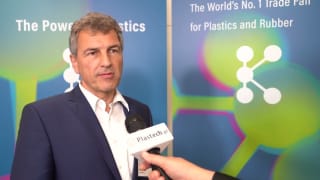 The networking and integration of production systems is one of the key features of the smart factory, which forms the core of Engel's inject 4.0 program. With its own MES (Manufacturing Execution System), the Austrian machine manufacturer assists its customers to increase their productivity and efficiency by networking. Engel e-factory is tailored to the requirements of the injection moulding industry and therefore ensures very deep vertical data integration down to individual cavity level. New modules are being constantly added to the modular system. Engel is unveiling a new module at K 2016 – the Energy module. It permits a detailed display, evaluation and optimisation of energy consumers. Machines from different manufacturers can be integrated to obtain a complete energy balance. At the same time, consumers not integrated in the MES can be recorded manually. These functions form the basis for certification according to EMAS, the European Union Eco-Management and Audit Scheme.
The networking and integration of production systems is one of the key features of the smart factory, which forms the core of Engel's inject 4.0 program. With its own MES (Manufacturing Execution System), the Austrian machine manufacturer assists its customers to increase their productivity and efficiency by networking. Engel e-factory is tailored to the requirements of the injection moulding industry and therefore ensures very deep vertical data integration down to individual cavity level. New modules are being constantly added to the modular system. Engel is unveiling a new module at K 2016 – the Energy module. It permits a detailed display, evaluation and optimisation of energy consumers. Machines from different manufacturers can be integrated to obtain a complete energy balance. At the same time, consumers not integrated in the MES can be recorded manually. These functions form the basis for certification according to EMAS, the European Union Eco-Management and Audit Scheme.Avoiding energy peaks reliably
An additional advantage of the new module is the intelligent distribution of available power sources to individual consumers. This hall management system is particularly beneficial when the entire machine pool is started up at once after a weekend or a factory shut-down, for example. The dynamic allocation of machine-specific consumption limits prevents energy peaks even in these cases.To ensure the needs-related distribution of power requirements, the Energy module accesses data in the ecobalance energy management system which is included in the functionality of the CC300 control system of Engel injection moulding machines. The ecobalance system allocates specific consumption limits and a specific priority to each consumer within the machine or production cell for machine start-up and in production mode. For example, it takes into consideration the high power demand required by an injection moulding machine during warm-up and the high demand for plasticising and injecting the material during production. After each cycle, the system redefines the consumption limits and priorities. The priority of each consumer which received a high amount of power in the previous cycle is reduced and the priority of each consumer which received no or little power is increased.
What ecobalance does within a machine or production cell is performed by the Energy module for the entire machine pool. Thereby, the machines and production cells can be grouped arbitrarily to allocate individual consumption limits to different production halls or hall areas. The more consumers and energy sources that are available to the energy management system, the more effective distribution can be.
Basis to achieve low unit costs
The Energy module provides injection moulding companies with greater leverage to reduce their power costs since power is a significant cost factor, especially at energy peaks. Even when maximum power requirements are seldom reached, they must be constantly provided by the electricity supplier. If the maximum connected load is exceeded, penalties must be paid.As before, energy efficiency is a vital key to achieving low unit costs. In the past, a large number of developments in drive systems have helped reduce the energy consumption of individual consumers. But today, the accent is more on the intelligent distribution of energy. Rapid advances in the networking of machine pools offered by Industry 4.0 open up new opportunities here.

Engel at K 2016: Hall 15, Stand C58




